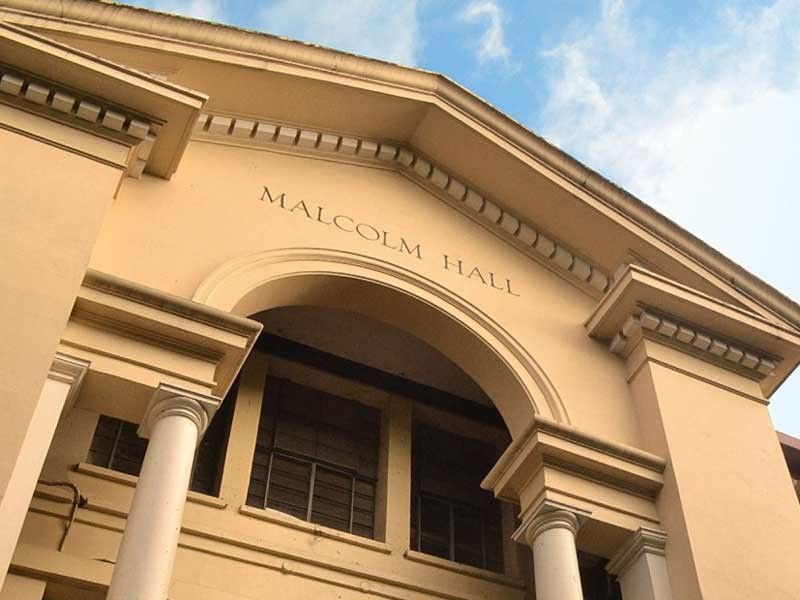
Upgrade to High-Speed Internet for only ₱1499/month!
Enjoy up to 100 Mbps fiber broadband, perfect for browsing, streaming, and gaming.
Visit Suniway.ph to learn
A bus zoomed past motorists stuck in heavy traffic as it drove along the southbound bus lane of EDSA in Cubao, Quezon City on November 7, 2023.
STAR / Miguel De Guzman
MANILA, Philippines — Workers believe rehabilitating EDSA is not only necessary but long overdue. But without clear plans to ease traffic or aid laborers during the two-year build, groups fear that everyday Filipinos will be left to bear most of the brunt.
To address this, rebuilding EDSA, also known as Metro Manila’s main commuter thoroughfare, should not be planned in isolation, said the Sentro ng mga Nagkakaisa at Progresibong Manggagawa (Sentro) said.
All affected stakeholders, especially workers and students commuting across the metro, should be included in careful planning before construction begins.
At the same time, Sentro Secretary General Joshua Mata pointed out that solving the expected traffic congestion and productivity decline will take more than one or two measures, as there is no one-size-fits-all solution to the problem.
“Dapat linawin po ‘yan sa publiko ng ating gobyerno kasi matagal na ho tayo nagsusuffer eh. Talagang kailangan irehabilitate, irebuild even ang EDSA. Ang punto lang namin ay bakit walang social preparation? Bakit walang paliwanag?” Mata told Teleradyo on Wednesday, May 28.
(The government should clarify this to the public because we’ve been suffering for a long time. EDSA really needs to be rehabilitated and rebuilt. Our point is, why is there no social preparation? Why is there no explanation?)
The Department of Transportation (DOTR) has proposed three mitigation strategies: a toll-free Skyway along EDSA, additional buses for the EDSA busway and an odd-even coding scheme.
RELATED: EDSA Rehab: How the government plans to avoid traffic jams
How about workers? If the government is willing to negotiate with San Miguel Corp, the expressway's operator, to fund the free use of the Skyway, it should also have prepared for the necessary incentives and subsidies for affected workers, Mata said.
He, however, also stressed that even if the government mandates flexible work arrangements — whether in hours or between on-site and work-from-home setups — it won't benefit workers whose jobs require them to be on-site, such as factory workers.
“Bakit parang lagi nalang afterthought ang manggagawa at commuters?” he added. (Why does it always seem like workers and commuters are an afterthought?)
According to the Metropolitan Manila Development Authority (MMDA), over 400,000 vehicles traverse the EDSA highway despite only having a capacity of around 300,000.
If the government truly wants to rehabilitate EDSA, Mata said it should be able to “move people and not just cars.” With the current traffic conditions, Filipinos already spend an average of four to six hours each day commuting to and from an eight-hour shift.
Time lost in traffic could have been spent with family or used to earn extra income. All the more if traffic worsens, especially with no clear vision of what EDSA will look like after two years of rehabilitation.
People or cars? Will it finally be people-centric, or will it remain car-centric, as many of the government’s road projects in the city have been?
For representative-elect Eli San Fernando (Kamanggagawa Party-list), these are just some of the many questions that need to be answered before construction.
“We will push for higher budget for mass public transpo particularly on rail transport program na nag-suffer ng matinding (that is suffering major) budget cuts this year,” he told Philstar.com in a message.
Sentro and San Fernando are urging the government to hold a transport summit or public consultation that includes major stakeholders in crafting solutions.
The project is scheduled to begin on June 13, aiming to replace the pavement, improve pedestrian lanes, and enhance flood management systems.

 1 week ago
6
1 week ago
6



